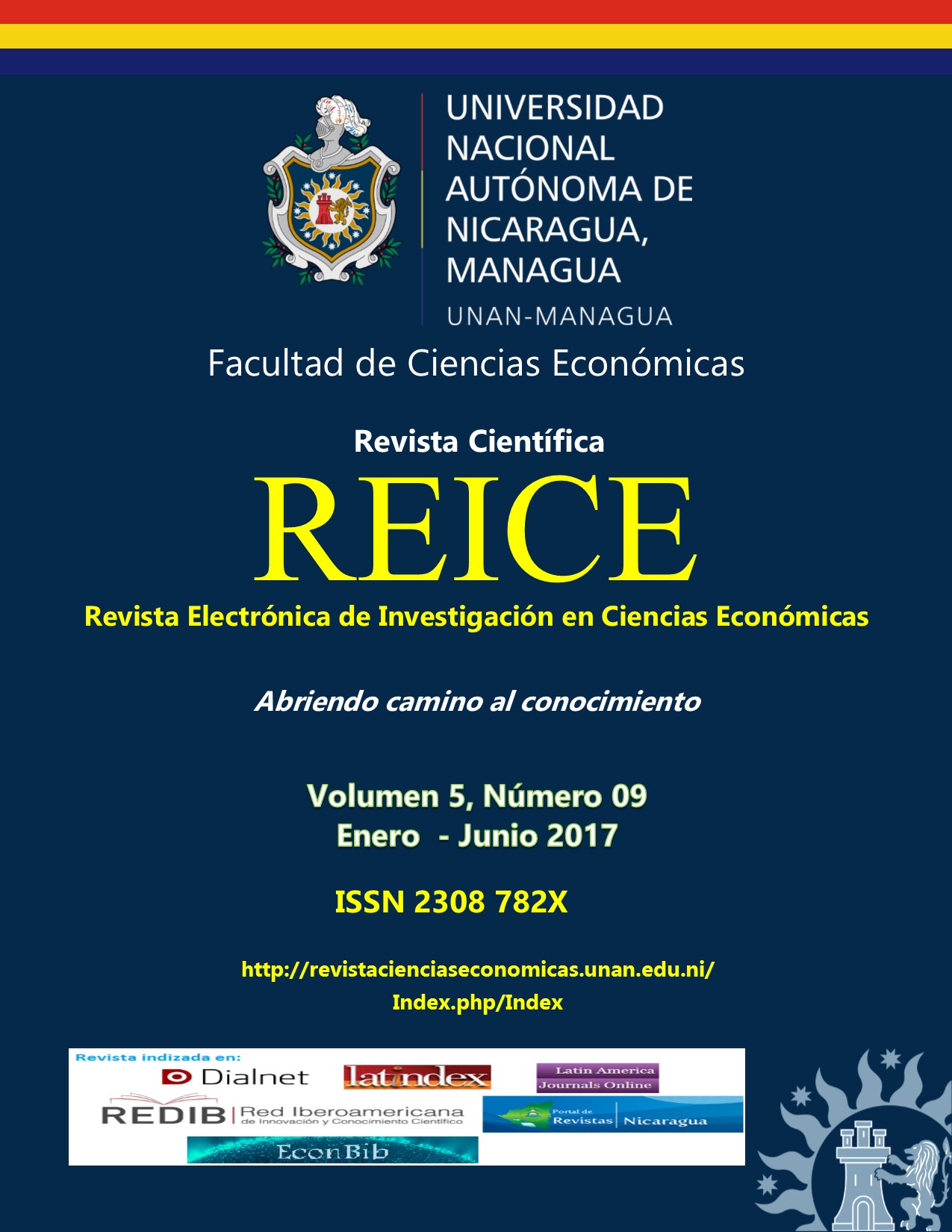Estimate of the value added tax evasion: 2006-2015
DOI:
https://doi.org/10.5377/reice.v5i9.4368Keywords:
Evasion, Value added taxes, Estimation, National accounts, Household consumptionAbstract
This study aims to estimate VAT evasion in Nicaragua by applying the Theoretical Potential Method Using the National Accounts, taking into account the advantages they present in low costs related to its implementation and the possibility of constructing the series of evasion, that its allows Evaluate the trend of noncompliance and the effectiveness of the Tax administration. More specifically, the non-deductible VAT method was chosen because there are no input-output matrices that allow an estimation using the value-added method and the lack of information without allowing for the development of the needs of different methodologies. The study reveals that the percentage of evasion has declined gradually, for 2006 meant 40.5% and the east decreased ten percentage points and stands at 30.3% in 2015.
Downloads
1106
XHTML (Español (España)) 528
Published
How to Cite
Issue
Section
License
Copyright (c) Revista Electronica de Investigacion en Ciencias Economicas
The rights to the articles published in REICE are from the journal, in order to be able to manage their best dissemination. However, since the purpose of the same is the dissemination of knowledge, this journal provides immediate free access to its content, under the principle that making research available to the public free of charge, which fosters a greater exchange of global knowledge.
The opinions expressed by the authors do not necessarily reflect the position of the publisher of the publication or of the UNAN-Managua. Its reproduction and distribution is authorized (in any type of support) provided that the following indications are fulfilled:
- The authorship of the work
- Indicate its origin (REICE magazine, volume, number and electronic address of the document)

